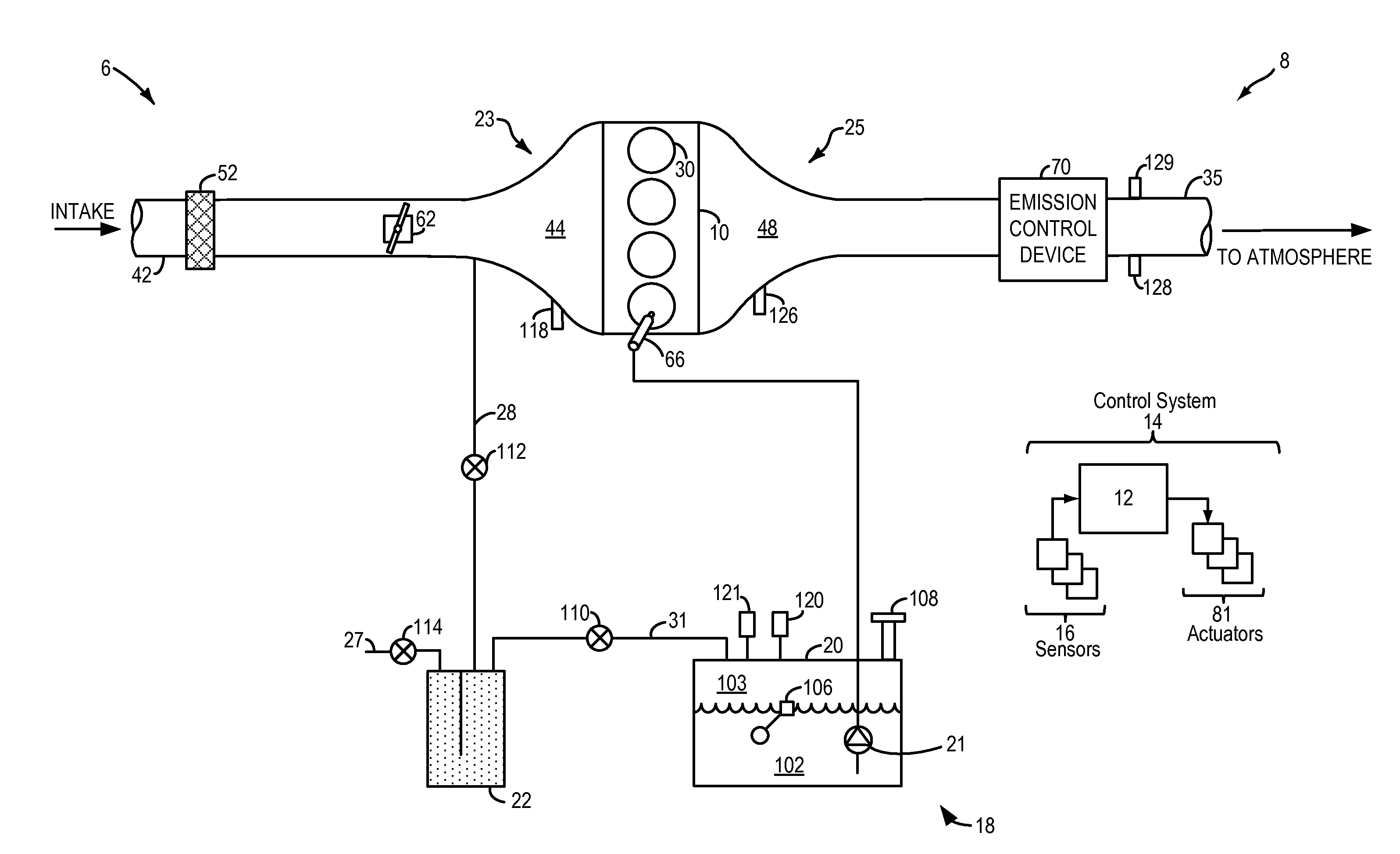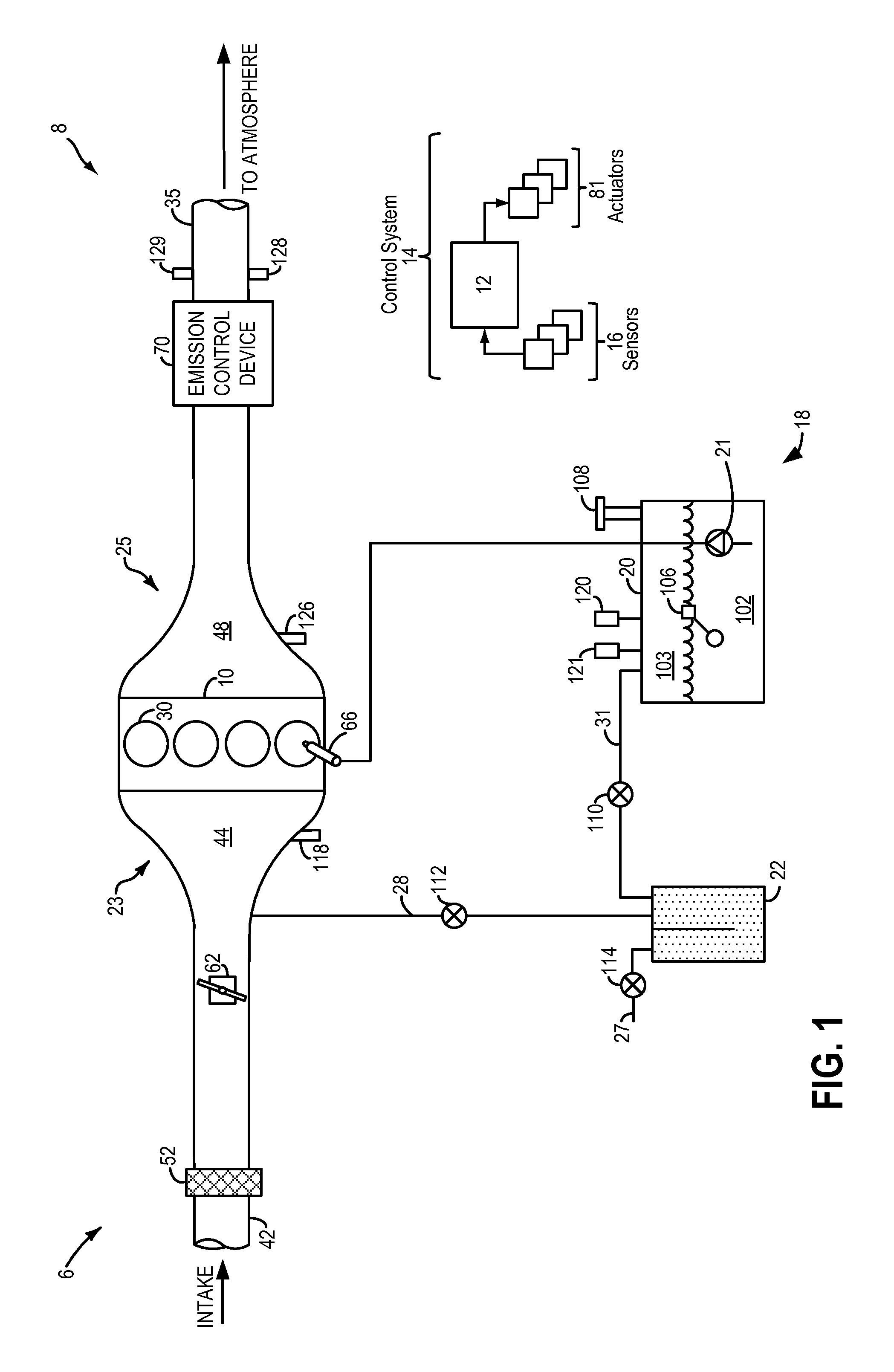Method and system for fuel vapor control
a technology of fuel vapor control and fuel tank, which is applied in the direction of fluid tightness measurement, instruments, machines/engines, etc., can solve the problems of fuel tank) as not only a control factor, but also a noise factor, and the pressure data collected in the approach of siddiqui may be corrupted, so as to reduce the frequency of running and completing a leak test, reduce the noise factor of temperature-induced noise factor in a leak test, and reduce the effect of heat rejection
- Summary
- Abstract
- Description
- Claims
- Application Information
AI Technical Summary
Benefits of technology
Problems solved by technology
Method used
Image
Examples
Embodiment Construction
[0014]Methods and systems are provided for identifying leaks in a fuel system coupled to an engine in a hybrid vehicle, such as the fuel system of FIG. 1. A leak test may be performed during selected vehicle-off conditions when fuel tank temperatures and pressures are stable. A controller may be configured to perform a control routine, such as the example routine of FIG. 2, to confirm stabilization of fuel tank temperatures and pressures after a sufficient duration has elapsed since a vehicle-off event. The controller may then perform a control routine, such as the routine of FIG. 3 to operate a fuel pump to actively increase a molar content of fuel in the fuel tank's vapor space, and thereby raise a fuel vapor pressure. A fuel system leak may be subsequently identified based on a rate of pressure decay from the fuel tank. Example leak tests are described at FIGS. 4-6. In this way, fuel system leaks may be identified based on a correlation between fuel in a fuel tank's vapor space a...
PUM
 Login to View More
Login to View More Abstract
Description
Claims
Application Information
 Login to View More
Login to View More - R&D
- Intellectual Property
- Life Sciences
- Materials
- Tech Scout
- Unparalleled Data Quality
- Higher Quality Content
- 60% Fewer Hallucinations
Browse by: Latest US Patents, China's latest patents, Technical Efficacy Thesaurus, Application Domain, Technology Topic, Popular Technical Reports.
© 2025 PatSnap. All rights reserved.Legal|Privacy policy|Modern Slavery Act Transparency Statement|Sitemap|About US| Contact US: help@patsnap.com



